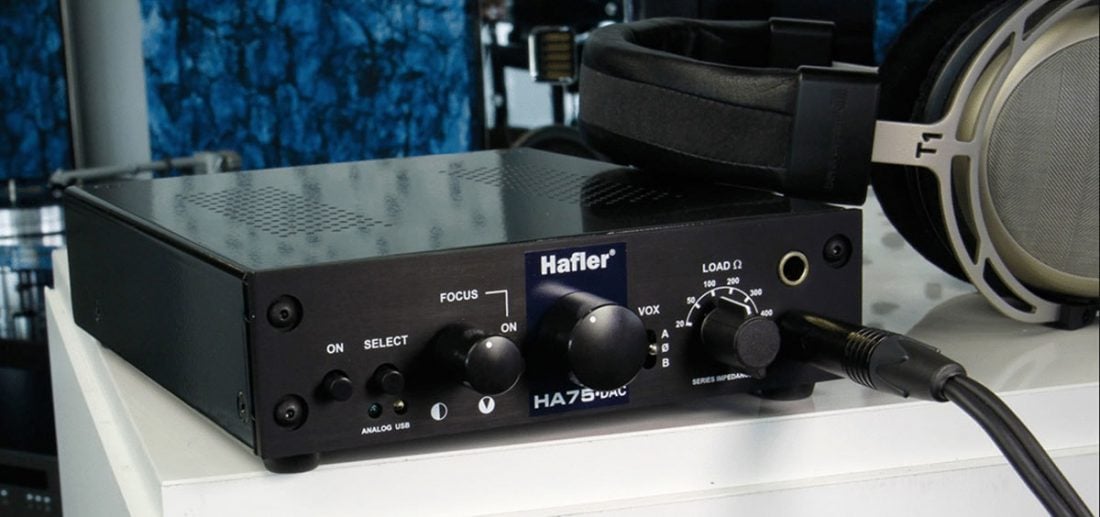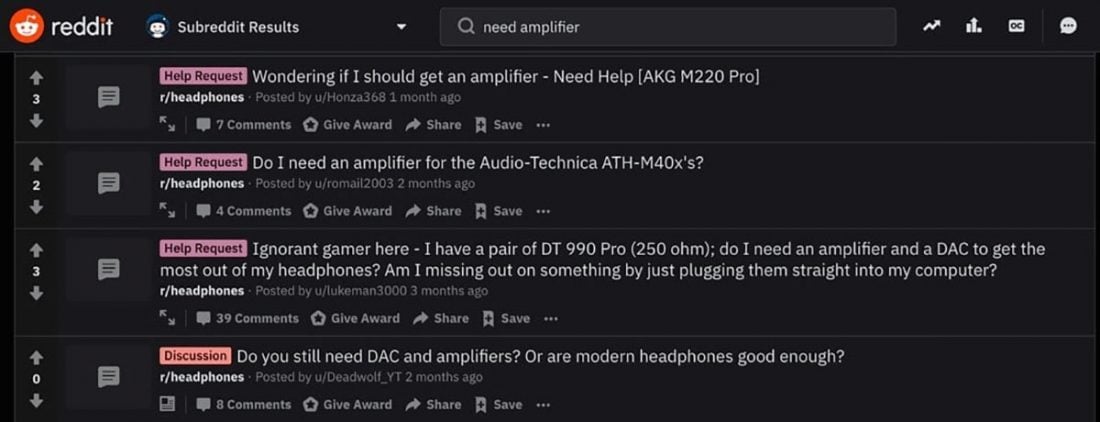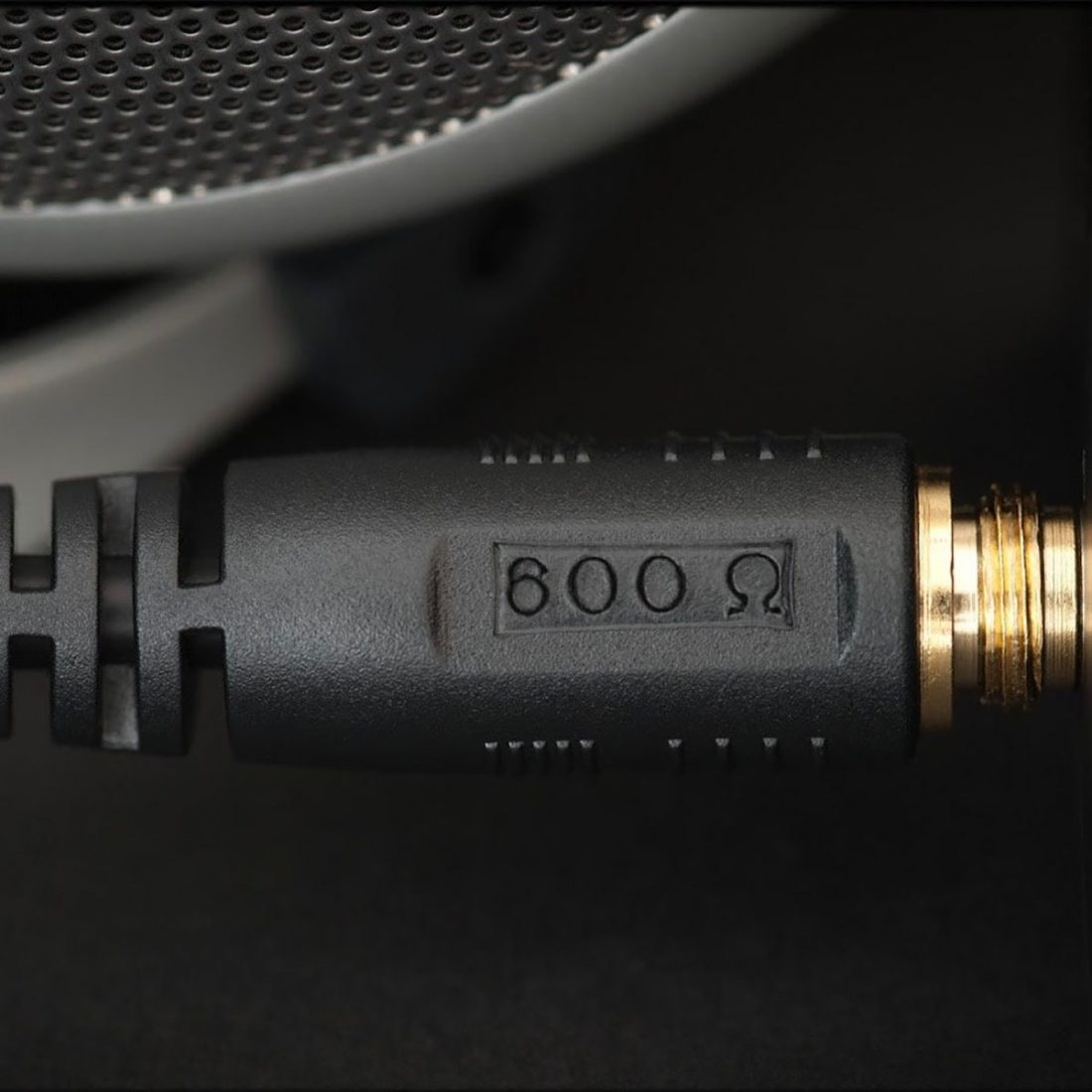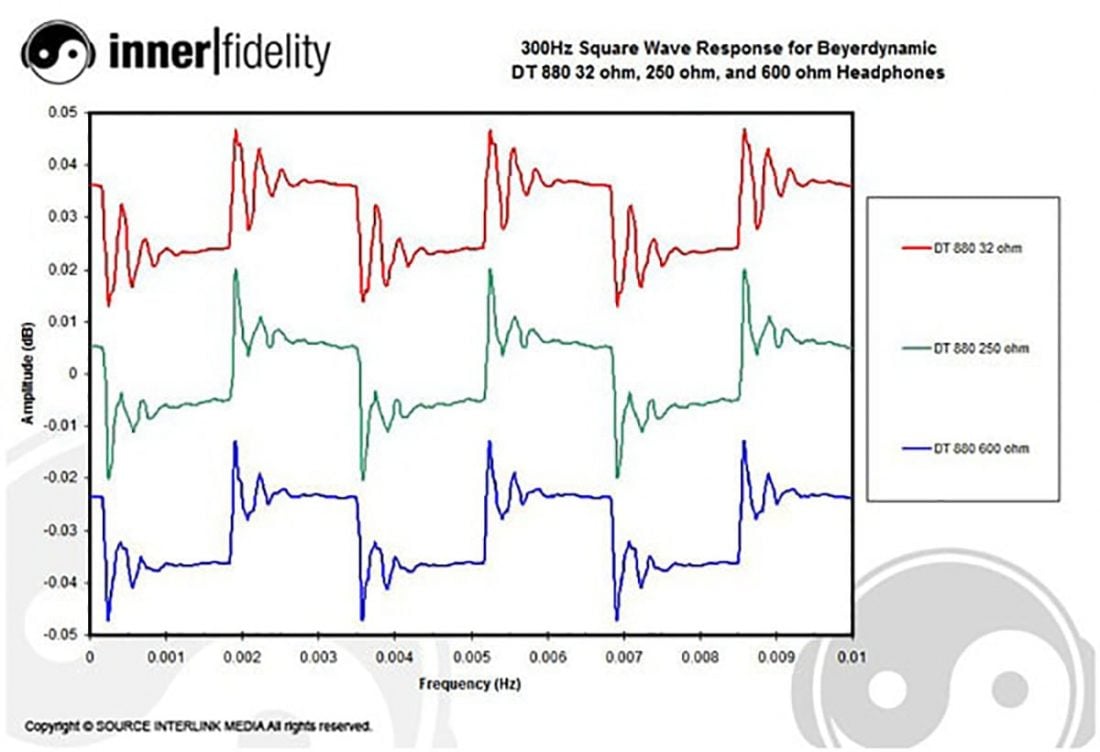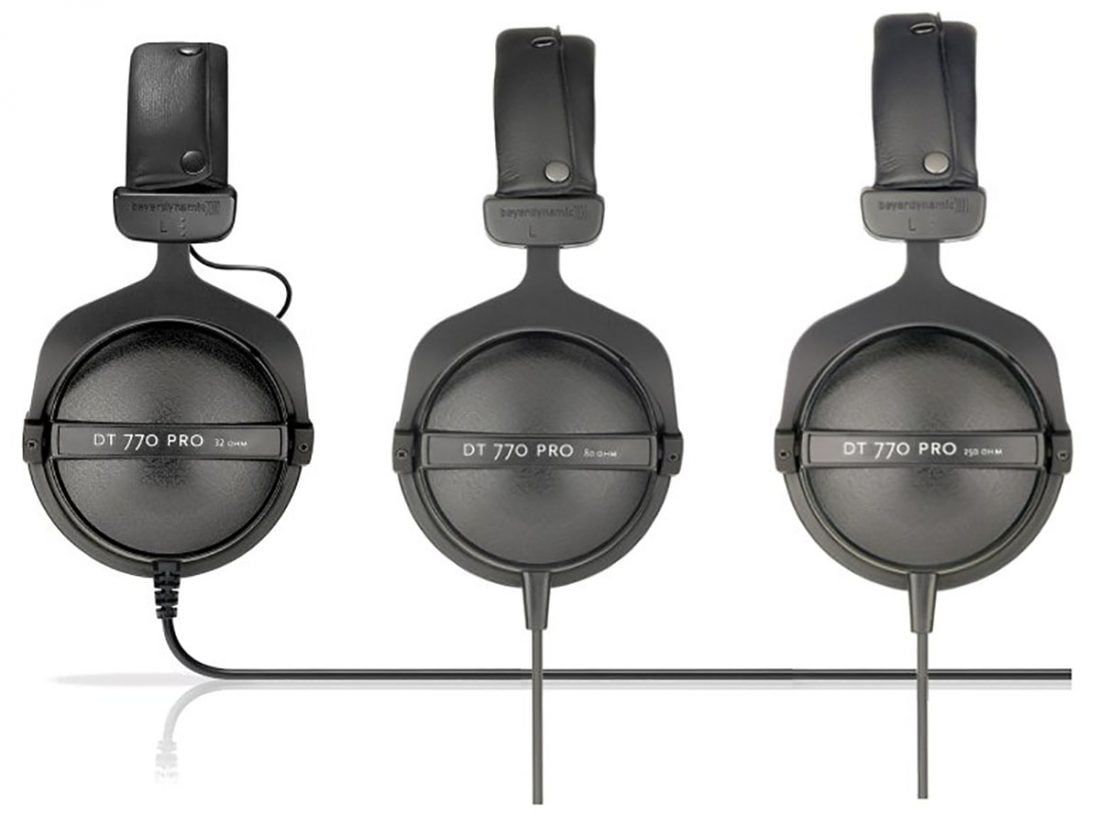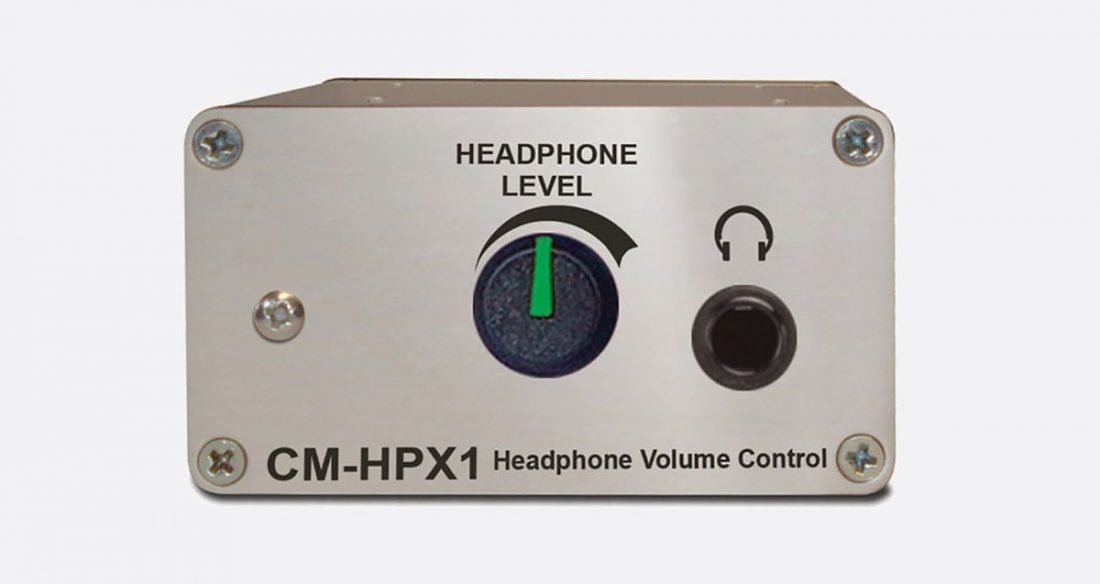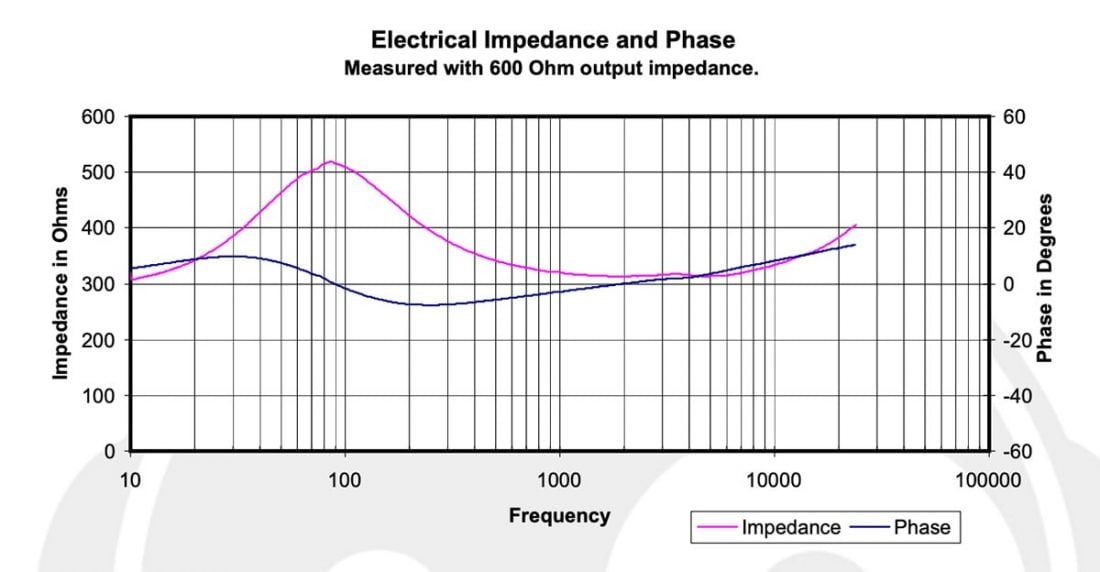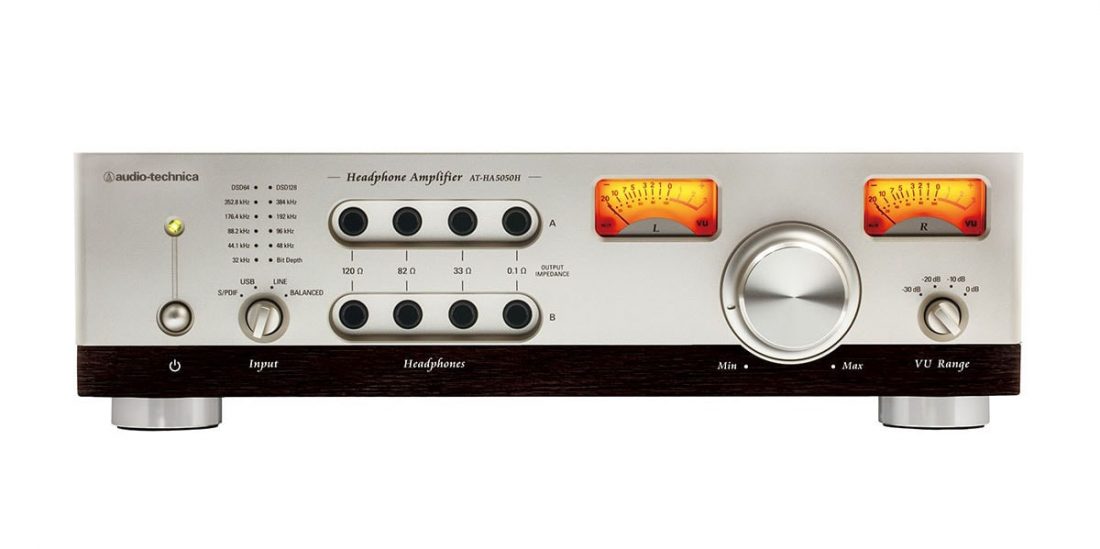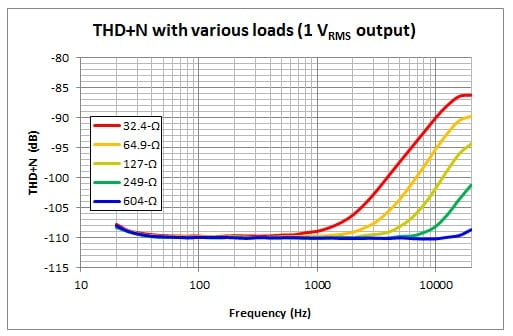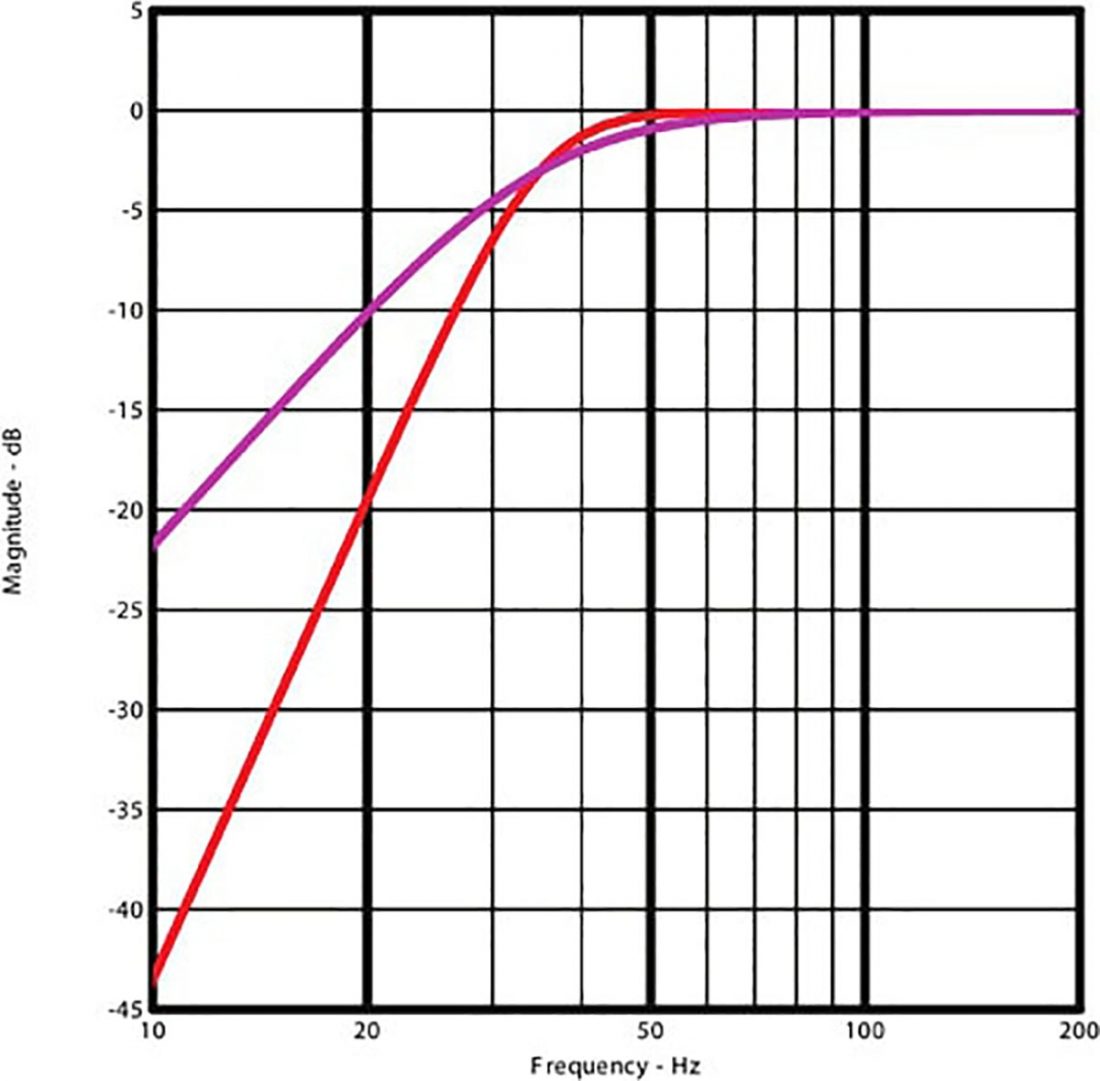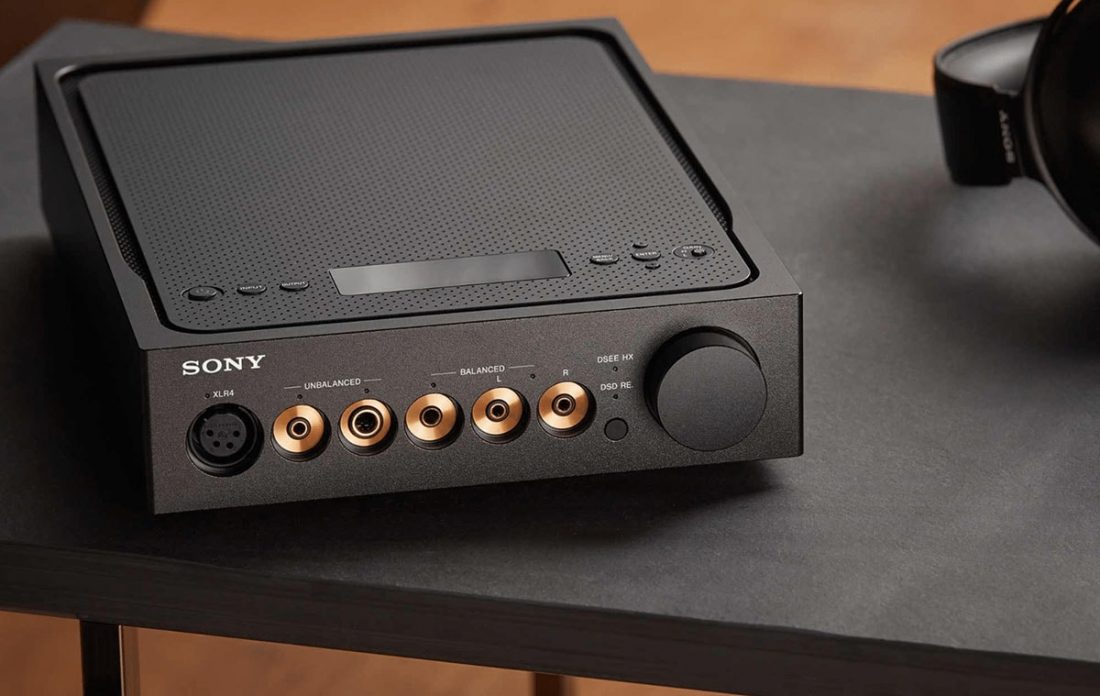Impedance is one of the basic specifications included with almost every quality pair of headphones and most audio sources (DAP, phone or amplifier). Everyone has seen the measurement, but I’m betting that few really understand the importance when making purchasing decisions. One of the first questions you will see in headphone forums is if a dedicated amplifier will be needed for a new headphone purchase. Lots of opinions fly around, often contradictory, so let’s take a look at the science behind the answer.
The Basic Concept of Impedance
When describing impedance, there are several terms that you should aware of. When viewed as a simple electronic circuit, the impedance of the audio source may be written as output (or source) impedance, while the impedance of the headphones may be considered load impedance. Headphone impedance is typically rated between 8-600 ohms, with a standard around 32 ohms becoming increasingly common. Audio source impedance is typically very low, often less than 4 ohms and approaching 0 ohms in many cases, but it may be as high as 120 ohms or more for specialized tube amplifiers, specifically output transformer-less (OTL) types.
Impedance Matching
Impedance matching is the interaction between the source impedance (the device the headphone is attached to) and the headphone impedance. To ensure the highest audio quality, the source and the headphones must pair well. As you may have guessed from the impedance range examples above, a match doesn’t mean ‘both the same’ but rather that they are ‘complementary.’ We will look at the rules around finding that perfect match in some detail below. For now, it is enough to understand that audio source and headphone impedances should not be equal and that headphones with different impedances will require different sources. Equal source and load impedance maximize the power we can transfer between the amp and headphones, but this typically reduces frequency bandwidth so it’s not what we want in high fidelity. In general, low impedance headphones (which we will hereby define as below 50 ohms) are designed to work properly with portable devices, as they can efficiently reproduce adequate sound quality and volume from a low voltage device. Conversely, high impedance headphones (50 ohms and greater) usually require robust amplification to perform their best.
Why are some Headphones High or Low Impedance?
Headphones with impedance greater than 100 ohms are typically older or professional studio specific designs. Pre-1990s receivers and pro audio equipment often used resistors to attenuate the speaker output power (wattage) to create a simple and inexpensive headphone circuit. These headphone circuits consequently worked best with high impedance headphones. In some cases, high impedance headphones were designed to chain multiple pairs in parallel for pro studio applications. Without getting too heavily into the math behind it, the high impedance load preserves the source output voltage to be able to drive multiple pairs of headphones. This was so prevalent that even as recently as 1996, the standard recommended source output resistance was 120 ohms, and went so far as to claim that source impedance had very little effect on the performance. Stereophile did not mince words with their opinion of that standard and claim. Most modern headphones are designed to appeal to as wide a market as possible, and that means they must play well on mobile devices. The sale of hundreds of millions of battery powered music players, including the ubiquitous iPod and more recently smartphones, has made lower impedance (around 32 ohms) headphones the norm.
Headphone Models with Multiple Impedances
Customarily, a particular headphone model is only available in a single impedance. Beyerdynamic is one of the few (if perhaps the only) major company that produces multiple versions of the same model, differing only by impedance: 32, 250, or 600 ohm versions of the DT880 and DT990 headphones, and 32, 80 or 250 ohm versions of the DT770. As you can see the versions do not perform equally. Steve Guttenburg of CNet explained: If properly matched to an appropriate amplifier, it is possible to achieve an enhanced quality of sound with high impedance headphones, at least with specific designs like the Beyerdynamic models above. Please don’t take this to mean that excellent sounding low impedance headphones do not exist. This is just one company’s approach.
Headphone Sensitivity
Sensitivity (or efficiency) is a measurement of headphone volume at a specific power rating. Headphone sensitivity is often measured at a specific frequency (1 kHz) at 1 mW of power. Sensitivity ratings are typically in the range of 90-105 dB (with outliers considered extremely sensitive or insensitive). It would appear, with comfortable listening volume levels of 60-80 dB, a full 1 mW of power should seldom be required to achieve more than adequate loudness. But sensitivity ratings do not tell the whole story. We also need to take into account music dynamics and our amp’s total harmonic distortion (THD). For highly dynamic classical music, the recommended dynamic range (the largest to the smallest intensity of sound that can be reproduced) is usually 20 db. An increase of 20 db requires that one hundred times the power be delivered to the headphones. With that much dynamic range, a 1 mW nominal sensitivity rating can quickly become a 100 mW power requirement for the amp. Amplifiers will also generally produce more distortion as power is increased (although this isn’t universal). In that case, a requirement for 100 mW at low distortion may lead to an amplifier actually rated at 1 W+ (amplifier power specs are typically given at 1% THD).
How Sensitivity and Impedance impact Volume
It is tempting to describe impedance as simply being resistance and use Ohm’s Law (Voltage = Current * Resistance) to illustrate, but Ohm’s Law is really only applicable to DC (direct current). If impedance was the same as resistance, comparing identical headphones that differ only in impedance would result in the higher impedance headphone always being quieter than the lower impedance one (given the same source voltage). However, this isn’t always so simple. So understanding impedance isn’t as simple as considering load resistance. The source output impedance is an important factor as well. Loading of the transistors (or tubes) and bias (current) is also related. Amplifiers will tend to deliver more voltage into higher impedance loads because the output impedance is not zero. With a high output impedance source, high impedance loads can provide more volume. An amplifier may be incapable of producing much power into a low impedance load if it is current limited, while it would be happy making plenty of power into a high impedance load. Different amplifier designs will all have unique specifications and abilities. No wonder it is difficult to imagine what the results will be when we consider pairing headphones with a source. We can make educated guesses based on the specifications, but until you try it, you can never really be sure.
Comparing Headphone Sensitivity and Impedance
To further complicate things, there is little consistency in headphone design with regards to impedance and sensitivity (even within a single manufacturer). There are low impedance headphones that are very inefficient and vice versa. Models with low sensitivity and low impedance. Other that are low sensitivity, but high impedance. High sensitivity, low impedance. Etc. From the following chart listing a variety of headphone models with a range of impedances, it is easy to see many different sensitivities. It’s pretty obvious that these headphones have differing source requirements.
Frequency and Impedance
Obviously, a headphone driver is capable of reproducing a wide range of frequencies. A perfect driver would remain consistent across the full audible frequency range. Guess what? The typical headphone driver is far from perfect.
Resonant Frequency in Dynamic Driver Headphones
The voice coil in dynamic headphones is designed to properly control the driver and ensure good behavior at its resonant frequency. Resonant frequency is the frequency by which a material vibrates most easily – think opera singers shattering crystal with a sustained note. Remember, most manufacturers state impedance at 1Khz in the headphone’s specifications. This impedance is likely significantly lower than at the actual resonant frequency for that driver. A frequency impedance graph for the driver illustrates a much more accurate picture. This resistance can multiply many times at the resonant frequency. Dynamic driver headphones do not have a perfectly flat impedance response across all audible frequencies. However, some designs are flatter than others.
Planar Magnetic Headphones
Planar magnetic (also called isodynamic, magneplanar, or orthodynamic) drivers, basically an amalgam of electrostatic and dynamic drivers, act differently than typical dynamic drivers. They use an S-shaped pattern for the voice coil (unlike traditional circular windings) which tends to yield a low impedance. However, much like dynamic drivers, not all planar magnetic headphones are the same. Some are easy to drive with low impedance and high sensitivity like the HiFiMan HE 400s (22 ohms – 98 dB). Conversely from the same company, the HifiMan HE-6 is notoriously inefficient and difficult to drive (50 ohms – 83.5 dB). The largest departure from traditional dynamic drivers is in the impedance response. Planar magnetic drivers do not have peaks and valleys, and are very flat across all frequencies. Planar magnetic and dynamic headphones of similar ratings will often have quite different amplification requirements.
Match for Best Performance
While it is extremely unlikely that anything catastrophic or destructive will occur with headphone and source impedance mismatches, sound quality can suffer. Connecting a low impedance load, when the amplifier is optimized for high impedance, not only reduces power, it also increases distortion. Some amplifiers have multiple outputs or switches that allow them to adapt to multiple impedance loads and remain optimally biased. The ratio of output impedance and load impedance changes also dramatically at the impedance spikes – those frequencies with the highest impedance for a particular headphone. This can result in poor control of the driver (damping), and possibly audible distortion at those frequencies. For instance, many Sennheiser headphones have an exaggerated frequency spike around 100Hz. The Sennheiser HD6xx line can require high voltage (3-6V) at the spike, making it a poor pairing for many lower-powered mobile devices, but an ideal match for the Bottlehead Crack OTL tube amplifier characteristics (120 Ohm output impedance and high voltage). Equal impedance between source and headphones is good for portable power requirements, but not necessarily for sound quality. Call it matching, pairing, synergy or just a case of plain old BFF, the source and the headphones must complement each other. As we touched on above, volume and sound quality can be greatly affected by impedance, requiring much more amplifier voltage to properly drive high impedance headphones, something that isn’t easy or possible to achieve with most portable devices.
High Source Impedance and Low Headphone Impedance Problems
There are real issues with the combination of high source output impedance and low headphone impedance. While often only found in the extremes of OTL tube amplification, this scenario creates higher harmonic distortion and noise, a low damping factor, and bass roll-off.
Distortion
Typical solid-state headphone amplifiers often have VERY low output impedance (and high current). As a result, they work well with a wide variety of headphone impedances. However, pairing a headphone whose load impedance is lower than the amplifier’s source impedance will most likely create audible playback distortion. This is why low impedance headphones are not recommended for high output impedance amplifiers, such as OTL tube designs like the Bottlehead Crack or Darkvoice 336SE. Stick with very high impedance headphones (200 ohms and up) for this type of amplifier. Nwavguy explained that
Damping Factor
Damping factor is the amount of control an amplifier has over the driver. It is often described as the ability of the amplifier to control driver motion once the signal has stopped. Damping factor is most apparent in low frequency reproduction, where low damping can cause loose, boomy and indistinct bass, while high damping tends to make bass sound tighter and cleaner, but subjectively less warm. Damping factor is measured as the ratio between the driver impedance and amplifier impedance, and is expressed in the format ‘2:1’ (where the first number is the headphone impedance and the second is the source output impedance) or as a single number ‘2’ (as in this case to represent the driver impedance). The term ‘rule of eighths’ is used as a rough guide. Divide the headphone impedance by 8, and that is the maximum source output impedance (32 ohm headphones / 8 = 4 ohm maximum source output impedance). In practice, it isn’t that strict a rule and often success can be had with a greater range. This ideal is based on the theory that regardless of how large an impedance spike is in the headphone driver’s response, a high enough damping factor prevents the frequency response from varying more than 1 dB (not typically audible).
Bass Roll-Off
Bass roll-off refers to frequency response playback audibly decreasing towards the lower frequencies. However, low-frequency response when matching headphones and amplifiers is a very complicated topic. Coupling between the amp and headphones (capacitors, transformers, etc) and the headphone’s inductive reactance below its resonant frequency also contribute to bass roll-off. Low damping factor is commonly associated with bass ‘bloom’ or ‘boom’ around the headphone’s resonant frequency. In practice, this also leads to a perceived roll-off below resonant frequency (and a very measurable roll-off if the amp’s coupling or output impedance are poorly matched to the headphones).
Balanced vs Unbalanced Amplifier Impedance
A typical unbalanced (single-ended) headphone amplifier is what we’ve been discussing in this article. It derives its name from the relative impedance to ground of the two connections in each channel (hot or positive and ground or negative). Because the impedance to ground differs, we call it unbalanced. A balanced output however, has two signal phases per channel. Each phase has an equal impedance relative to ground, hence the name balanced. The advantage of balanced connections over unbalanced connections is common-mode noise rejection. Because any interference is imprinted equally on the two phases’ equal impedance, that common-mode interference cancels out. The usual approaches to driving balanced outputs can also impact audio quality because output impedance is effectively doubled. “Balanced amplifier” is something of a misnomer. Balanced and unbalanced are types of interconnections between devices (like an amp and a headphone); these terms do not refer to specific amplifier architectures. Usually when you see the phrase “balanced amplifier” it is referring to a differential amplifier without shared grounds and balanced outputs. A variety of sources and amplifiers and their output impedances:
Conclusion
Let’s take a moment to summarize what we’ve discussed about impedance. It’s a complicated topic, but it doesn’t have to be confusing.
There are two types of impedance (measured in Ohms): headphone impedance and source impedance. Impedance matching between headphone and source is done to ensure a good combination of sound quality and sufficient volume. A match means ‘complimentary’ not ‘equal’. Pairing a headphone with an impedance of 2.5-8 times higher than the source impedance should yield good results. This recommended ratio is commonly known as the ‘rule of eighths’ and contributes to proper driver control (damping factor). Pairing a headphone with an equal or lower impedance than the source will likely result in unpredictable (poor) sound quality. Sensitivity is also an important factor in headphones, and is a measurement of loudness at a certain power input (usually given as decibels per 1 mW). While sensitivity and headphone impedance both influence volume, they are not linked. Headphones vary greatly in impedance and sensitivity and both must be considered when selecting an appropriate amplifier. Sensitive (100 dB+), low impedance (8-32 ohm) headphones will typically pair well with a portable source (such as a phone) without much benefit from a separate amplifier. Less sensitive (less than 95 dB), and/or medium to high impedance (more than 50 ohm) headphones will typically benefit in sound quality and volume with a more robust amplifier than a phone (or portable device) provides. Headphone impedance ratings can be misleading because dynamic headphones vary in impedance at different frequencies and are not flat in response (the rating is for a single frequency). Planar dynamic drivers do not suffer from this problem and are flat in impedance across all frequencies. Higher impedance headphones require more source voltage (something portable devices are not good at) and lower impedance headphones require more source current (something OTL tube amplifiers are not good at providing). While some high impedance headphones are made to an elevated standard (such as utilizing thinner voice coil wires) and can be capable of lower distortion, higher impedance does not necessarily equate with better sound quality.
NwAvGuy tells us that “…a “perfect” source has an output impedance of zero ohms. This means it will always deliver the same output into any load.” Since we live in the land of compromise rather than perfection, we have to make educated decisions when selecting an amplifier for our headphones. Luckily, there is almost a guarantee that someone out there has tried and written (or YouTubed) about their experiences with the combination of headphone and source you are considering. Now you know to disregard or be skeptical when you hear that “impedance is unimportant” when considering new headphones or amplifiers. Contrary to some opinions, it’s not all about sensitivity. Those folks have probably never considered the audible impacts of source and headphone impedance matching. Personally, I occupy a very specialized niche of the headphone world. I own (and love) a Bottlehead Crack OTL amplifier. This means that my headphone choices are VERY limited when selecting an appropriate pairing; there are very few 200+ ohm headphone options. Luckily it sounds so good that I’m happy to live with the limited selection. Of course, it does require that I own a few solid-state amps (as well) for all those other low impedance, low sensitivity headphones that I can’t resist. The sacrifices we must make for a hobby!
